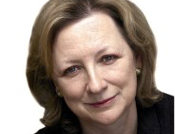Carla Carlisle on the miracle of lambing
Carla is reminded that some things never change in this country, as sixteen million lambs are born in the UK every year


Memory can be as fickle as the April sun. Until the fritillaries poke up, elegant in their snakeskin print, modest in their shy droop, I've completely forgotten this annual miracle is due. In the same hazy way, thanks to a diet of radio and newspapers, I don't realise it's spring until the blackthorn blossoms like snow on the hedgerows and lambs gambol idiotically in the fields.
Especially the lambs, the ancient link that connects us with our past. By 4,500bc, shepherds and their flocks had reached Britain and, for centuries, they relied on sheep to yield wool, milk and meat. Once upon a time, Britain was the global centre for sheep husbandry. I live in the land of wool churches and relics of wool wealth, but it took BBC 2's Lambing Live to remind me what a wonderful country this is. Where else in the world would a major television network devote six hours of prime time to following the lambing season on a Cumbrian sheep farm? In the company of mucker-in Kate Humble-think Meg Ryan without the ditziness-and farmer and broadcaster Adam Henson (he farms 1,600 acres in the Cotswolds), the nation moved in with the Marston family. Born and bred in the Eden valley on the very eastern edge of Cumbria, Marstons have been farming this remote land for three generations.
Sixteen million lambs are born every year in Britain, and, thanks to the miracle of a mobile scanner, the Marstons know that they have 698 pregnant sheep expecting a total of 1,268 lambs-the ewes are dotted with coloured spots to signal singletons, twins and triplets, a helpful touch of modernity in a primordial world of sleepless nights, complicated births, orphans and adoptions. Most of the sheep are pure-bred Swaledales, the traditional hill sheep in these parts, but there are small flocks of three other varieties, each with its good points (Swaledales have easy births, freckled lambs) and minuses (Beltexes look like pigs, have difficult births). But touching and educational as I found the lambing, something else held me transfixed night after night. The Marstons themselves.
The farm is now run by Andrew and his wife, Rachel, a couple as hefted to the land as their Swaledales. Rachel, beautiful, articulate and a true daughter of the land- her father, also a farmer, breeds sheepdogs-works full-time on the farm and supplements the farm income with part-time work in town as an accountant. Andrew is as silent as Rachel is talkative, his every move confident, tender and full of the wisdom of a lifetime of lambing seasons. They met when they were 13, married in their early twenties and now have three young daughters.
Their converted barn is attached to the farmhouse where Andrew's parents live. Donald is still active in the day-to-day running of this farm inherited by his wife. Like many farmer's wives, Christine works part-time (as a teaching assistant at the local school), but is on hand at lambing to take charge of tagging.
She paints barn doors as Donald goes out on the hills to repair the stone walls that define the fells and provide shelter to the sheep. If it all sounds like Little House on the Prairie, on Sunday, the whole family attends chapel, where Donald gives the sermon and sings in the choir. Watching this farming family is like hearing the prayer from the 1928 Book of Common Prayer: ‘Deliver us, we beseech thee, in our several callings, from the service of Mammon, that we may do the work which thou givest us to do, in truth, in beauty, and in righteousness, with singleness of heart as thy servants, and to the benefit of our fellow men.'
Before my week with the Marstons, those words hardly seemed prayable. It was a wonderful reminder that farms and families like the Marstons still exist. To feel hefted to this land, instinctively understanding where you belong, is as good as life gets. Call it the continuous harmony of country life.
Sign up for the Country Life Newsletter
Exquisite houses, the beauty of Nature, and how to get the most from your life, straight to your inbox.
Country Life is unlike any other magazine: the only glossy weekly on the newsstand and the only magazine that has been guest-edited by HRH The King not once, but twice. It is a celebration of modern rural life and all its diverse joys and pleasures — that was first published in Queen Victoria's Diamond Jubilee year. Our eclectic mixture of witty and informative content — from the most up-to-date property news and commentary and a coveted glimpse inside some of the UK's best houses and gardens, to gardening, the arts and interior design, written by experts in their field — still cannot be found in print or online, anywhere else.

